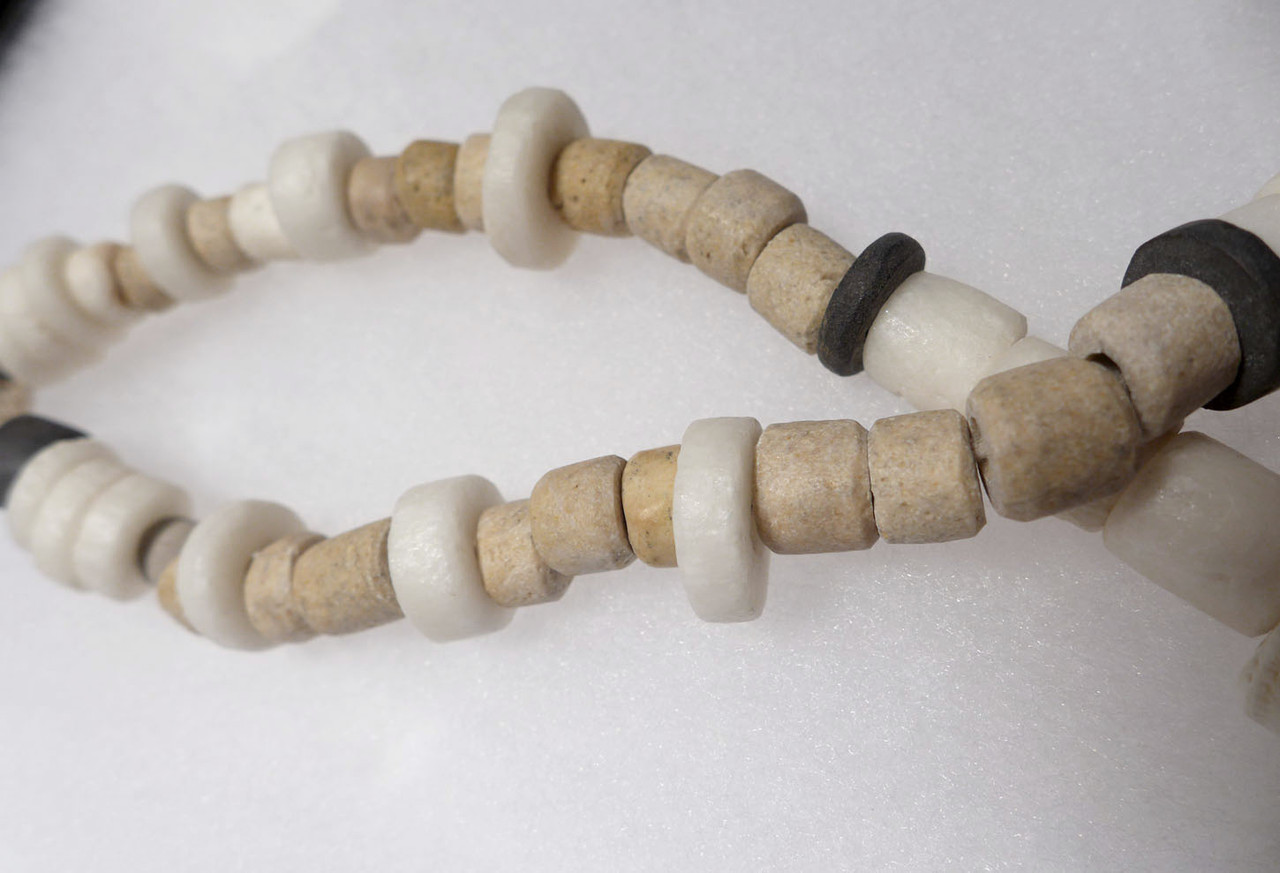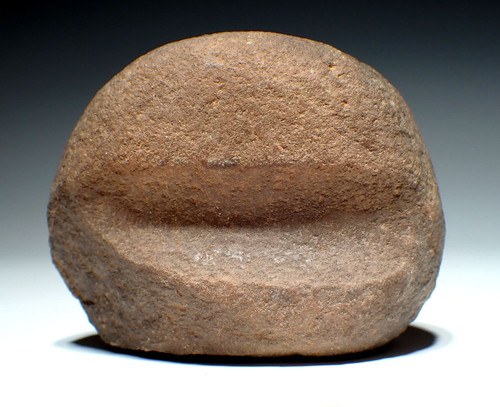Product Description
SEE MORE AFRICAN NEOLITHIC ARTIFACTS
On a dinosaur fossil-hunting expedition in 2000 by a team of scientific explorers led by Paul Sereno, a paleodune and ancient lakebed site was discovered that yielded over 200 ancient burials of Kiffian and Tenerian people. The scientific findings showed that this area was once a humid lake region that was home to a hunter-fisher-gatherer people. The area became known as the "Green Sahara" for its once fertile and habitable landscape. Noted paleontologist, Dr. Paul Sereno, famous for other Saharan dinosaur discoveries, shot into the archaeological spotlight with his discovery of the ancient lakebed cemetery at Gobero in Niger in the year 2000. Interred in the many burials were numerous stone tools, ceramics, shells, beads and bone harpoons typical for the lifestyle of these ancient people of the Green Sahara. This RARE and exceptional AUTHENTIC artifact is similar to the specimens found at Gobero. It comes from the same period and Tenerian Neolithic Culture of that famous discovery.
Any and all artifacts from the Tenerian Neolithic are rare but from ANY Neolithic culture, complete, original bead jewelry sets are extraordinary discoveries! Despite our extensive experience handling thousands of prehistoric Saharan objects, this is the ONLY instance of us encountering an actual complete and original ensemble of Neolithic bead jewelry. Acquired directly from the collection of the original discoverer, this set is complete as found together, and even includes the original central stone pendant. It was temporarily restrung on modern cord, into two separate items but could be restrung into one large main necklace and safely worn. Based upon current African jewelry traditions, the beads were likely worn in a multi-strand necklace design with the pendant being the centerpiece of the largest necklace. The beads are made of quartz, argillite, shell, and steatite. Bead forms used are discoidal, barrel-shaped and tubular. The central pendant made of argillite, is smooth carved into a long bar-shaped form.
This original set would be a centerpiece, display prize of any collection showcasing African prehistoric body adornment or Neolithic jewelry. Caution in purchasing any beads sold as " African Neolithic. Beads were extremely abundant in later African historic periods, and the majority of beads sold as "African Neolithic" are no more than a couple hundred years old. This set is truly of an age that is thousands of years old, and comes from an African Neolithic culture that in of itself, objects are rare from of any type!
There are many modern African beads that have flooded the market in the recent decades. We have seen numerous fake examples of these in the marketplace. When examined under magnification, fakes will have evidence of modern grinding marks on the surface and in the grooves. They will also lack any natural mineral deposits deep in microscopic crevices. An authentic specimen like this will lack ANY evidence of recent grinding marks as seen above. Under microscopic examination, these beads also still have intact ancient mineral deposits.
The region where Tenerian artifacts were once found is now protected preventing any collecting. Furthermore, it is located in extremely dangerous open desert regions under constant unrest occupied by armed bandits and terrorists. We were very fortunate to have acquired an old French private collection of these artifacts by former expedition guides to the region in the 1960's and 1970's. We have a very limited amount and once sold, we will never be able to replace them. Objects from the Tenerian African Neolithic culture are so rare that not even most major museums have a single object in their collection.
HISTORY
The Earth has been warming and cooling for millions of year, well long before humans were on the planet. One of the most dramatic examples of climatic change in the last 10,000 years is the desiccation of what is now the Sahara desert. Prior to as recent as 3000 B.C., the South Central Sahara region in Africa was a humid lake savanna. It was home to a thriving culture of ancient humans known as the Tenerians and before them, the Kiffians. The occupation of this area by these two peoples occurred continuously from around 7700 B.C. to the drying of the Sahara in 2500 B.C..
In the final Pleistocene and early Holocene Periods around 10,000 years ago, the South Central Sahara Desert was once a highly favorable environment for hunters, gatherers and pastoralists. Freshwater lakes existed between the dunes in what is now the Tenere region, Lake Chad was eight times its current size, the highlands supported Mediterranean forest trees, and a diverse variety of both large and small fauna flourished there. The slow drying out process of the Sahara, began 7,000 years ago and ended 4500 years ago resulting in the barren conditions that exist to this day. As we progress through time from the end of the Pleistocene towards the end of the Neolithic Period there, we see humans relying more on meat from raised animals as opposed to hunted animals that once roamed wild in the formerly Green Sahara.
 US DOLLAR
US DOLLAR
 EURO
EURO
 AUSTRALIAN DOLLAR
AUSTRALIAN DOLLAR
 CANADIAN DOLLAR
CANADIAN DOLLAR
 POUND STERLING
POUND STERLING


























